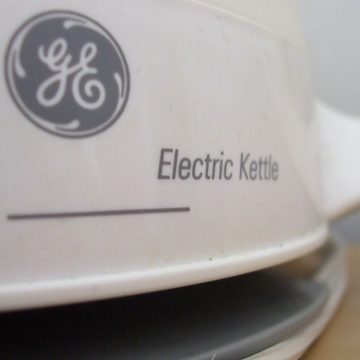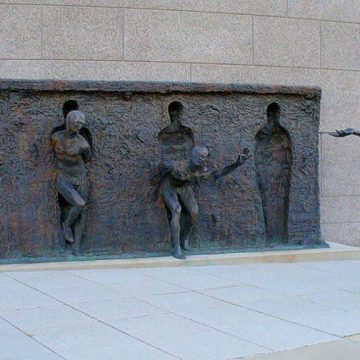You’re working on a project that has a looming deadline. You started with lots of enthusiasm. You made some progress, but then crunch time arrives. You find yourself swirling amidst a torrent of conflicting ideas as your forward motion comes to a stop. Your mind goes numb. You can’t breathe. And the clock keeps ticking, louder and louder.
Tick, Tock, Tick, Tock.
Conventional wisdom would have you believe that better time management skills could provide a simple cure to deadline paralysis. Maybe that’s too simplistic a view.
Projects (especially those with deadlines) do include a time variable. But they also include another variable: energy. And successful energy management skills are just as important to your productivity as time management skills.
So what’s a body to do?
 Here’s one way to think about it. You’re canoeing downstream, with plans to meet with friends at a designated place and time. Suddenly, you see yourself approaching a logjam that interferes with the river’s downward flow. As the water meets the logjam, pressure begins to build up, resulting in a more turbulent flow of water. You recall hearing about other canoeists who have been injured and even drowned in this part of the river.
Here’s one way to think about it. You’re canoeing downstream, with plans to meet with friends at a designated place and time. Suddenly, you see yourself approaching a logjam that interferes with the river’s downward flow. As the water meets the logjam, pressure begins to build up, resulting in a more turbulent flow of water. You recall hearing about other canoeists who have been injured and even drowned in this part of the river.
No doubt you’re wondering (and worrying!) whether or not you’ll ever reach your destination. And whether or not you’ll get there on time. But, I’ll bet that you also might be considering whether you’ll still be in one piece when (or, even if) you finally get there.
First, take a breath and simply notice the logjam that blocks your progress. Recognize it. Acknowledge it. No need to sugar coat it, but don’t run away from it, either. No blame, no shame. Just, “hmmm, isn’t this interesting.”
 Back up (and gain some perspective).
Back up (and gain some perspective).
Second, refocus your attention. Take a moment to double-check that you are in a fairly “safe” place along the river. (We don’t want you capsizing in that whirlpool right up against the logjam, after all!)
Now, pull back on your focus a bit until you can see both your destination and the logjam that currently blocks your progress. Check in with your breathing and your body for signals that you might need to alter your plans as you respond to the following questions:
- What is your ultimate goal?
- What do you really want to accomplish?
- What are you responsible for, and to whom?
- Given your projected timeline and current energy levels, is your original goal still desirable and feasible?
- Can you renegotiate the project outcomes and/or deadlines?
As you resolve these questions, listen for your heart and mind to give you the “all clear” signal to move ahead.
Getting from here to there
Third, invite your creative side to come out and play. It’s a time when you can explore (from both a time and energy perspective) your options for moving forward. You might remember something that worked well in a previous experience. Or you can discover new ways of thinking and learning about the current situation.
Using the example of a logjam, you have several productive alternatives:
- Use a snag boat. This is a special type of steam boat that literally breaks through the log jam and then lifts the logs into the boat where they can be chopped into smaller pieces. Try chopping your project down into small, doable pieces.
- Raise the water level in the river. An increased supply of water can provide enough momentum to float the logjam loose. Take each of those small steps you just identified, one at a time, and you will soon find your way clear and your energy and momentum restored. It’s the increased flow of activity and energy that can make the difference.
- Find a different route. Energy will always seek a path of least resistance. That is, the easiest route. It may sometimes mean lifting the canoe out of the water to portage downstream along the bank, past the logjam, before resuming your downstream journey.
- Is there an easier (or less-labor intensive) way to get your project done?
- Is there anyone who can help with some of those bits and pieces you identified earlier?
 Find and remove the key log. Often, there is a single log that holds the logjam together. It’s also sometimes called the kingpin. Once you identify and remove that specific log, the blockage disappears and the entire logjam falls apart. In your case, the key log might be a limiting belief that blocks your way forward, such as “it has to be perfect.” Granting yourself permission for “good enough” instead of “perfect” might be all you need to resume your progress at full speed.
Find and remove the key log. Often, there is a single log that holds the logjam together. It’s also sometimes called the kingpin. Once you identify and remove that specific log, the blockage disappears and the entire logjam falls apart. In your case, the key log might be a limiting belief that blocks your way forward, such as “it has to be perfect.” Granting yourself permission for “good enough” instead of “perfect” might be all you need to resume your progress at full speed.
From “what now?” to “now, what?”
Logjams are a normal part of life on the river. Getting past them can sometimes leave you behind schedule as well as drained of energy and enthusiasm.
 Getting back into perspective within your body, mind and spirit can help you to clarify your overall goal in light of your present situation. This clarity then offers a path of least resistance in which your creative energy can again flow forward. As a result, your downstream journey can be much more rewarding than if you had blindly reacted to your initial panic and fear when faced with the logjam. And you’ll successfully finish your project with time and energy to spare.
Getting back into perspective within your body, mind and spirit can help you to clarify your overall goal in light of your present situation. This clarity then offers a path of least resistance in which your creative energy can again flow forward. As a result, your downstream journey can be much more rewarding than if you had blindly reacted to your initial panic and fear when faced with the logjam. And you’ll successfully finish your project with time and energy to spare.
*******************
You may freely share and/or reprint in other electronic or print publications, provided you include the following attribution:
“ASK ME House, LLC article © 2008 Mary Elaine Kiener, RN, PhD, all rights reserved. Reprinted with permission.
Please also send me a courtesy note with a copy of the publication.











Thanks so much!
Thanks for the feedback….If you mean the part about acknowledging and simply “being with” whatever’s causing the “logjam”…..this is a skill that’s often new for us to incorporate into our lives. I’ve recorded a Guided Focusing Exercise entitled: Saying Hello to Something that might give a little flavor of how you might apply this in a positive way.
Most the stress that we encounter is due to the fact that we are either trying to change something or prevent something from changing.
I so agree! Thanks for your insightful feedback.